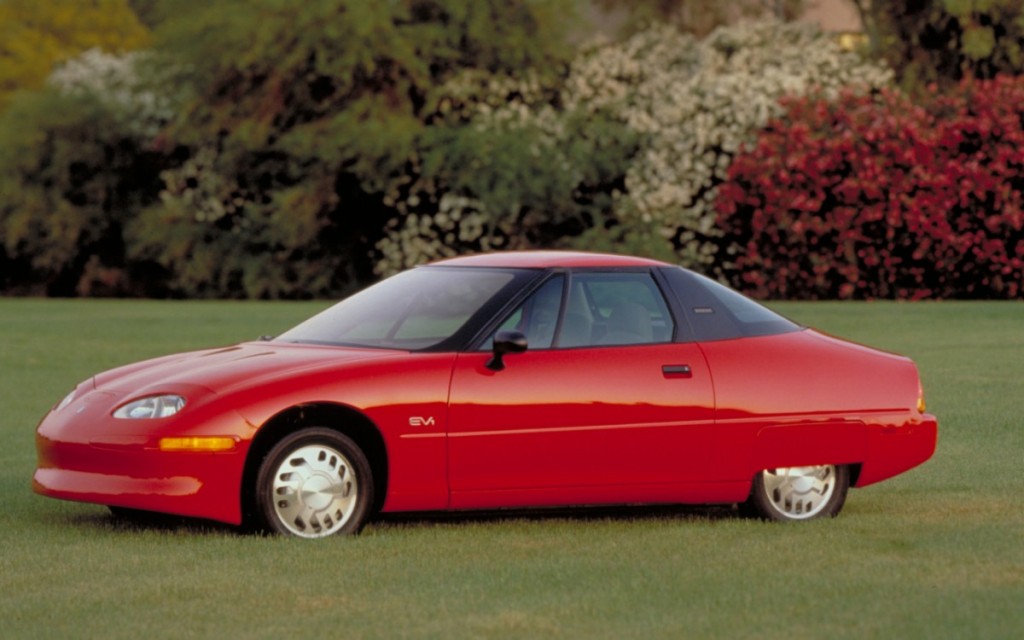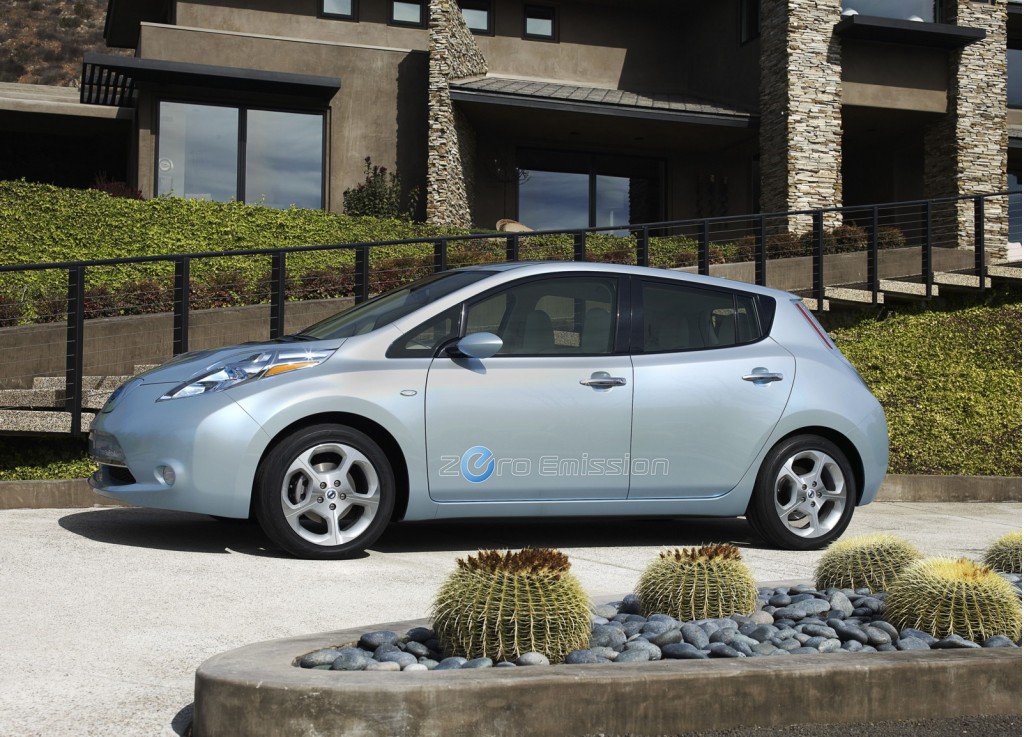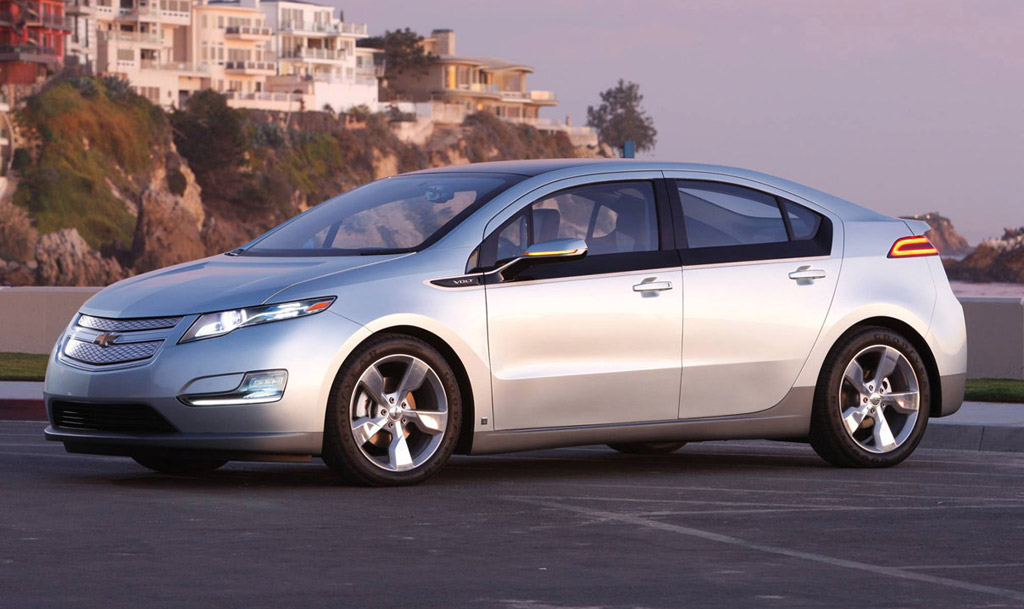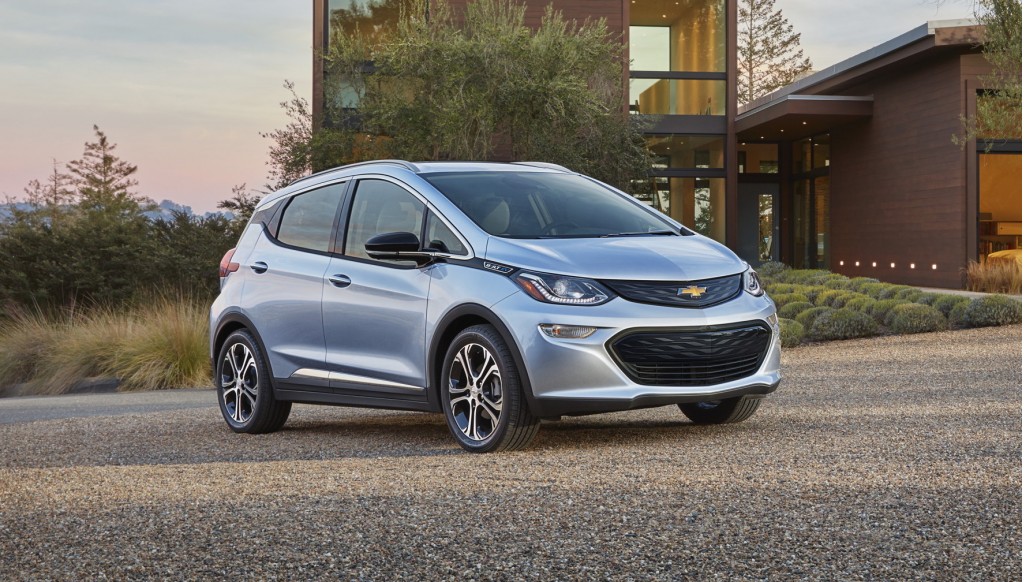The automobile has been with us since 1885, but only over the last 50 years have governments started to face up to its ill effects on the environment.
The world's major car markets have mostly now legislated increasing levels of fuel economy and reduced tailpipe emissions not only of gases directly toxic to humans but also of carbon dioxide, a key component of climate change.
Still, green cars have always been part of the market—though they haven't always found long-term sales success.
DON'T MISS: Nissan Leaf electric vs Toyota Prius hybrid: which is lower on cost, emissions?
In chronological order, here's our list of the dozen vehicles we consider the most important green cars over 130 years of automotive history.
It starts with alternative powertrains, proceeds to cars that set design on a specific path, and includes a few that are green simply because they were smaller.
The list is the product of long discussions, and undoubtedly readers will propose others that they feel should have been included. As the saying goes, your mileage may vary.

1914 Detroit Electric car, owned by GE scientist Charles Steinmetz, Schenectady, NY, June 2011
(1) Early 20th-century electric cars (Detroit Electric et al.)
This is really a group of cars, most of them remarkably similar, and toward the end, many of them made by the same company.
They are the early battery-electric vehicles that from 1890 to about 1910 were entirely competitive with the gasoline and steam powered vehicles of the day.
They often topped out at about 30 miles per hour, but they were considered by far the most civilized, smooth, and comfortable entries in the market—and hence most suitable for ladies to drive.
When Charles Kettering invented the electric self-starter, which arrived on the market in 1912, the superior range and speed offered by energy-dense gasoline soon relegated these electric cars to the sidelines.
The Depression was the final blow, and the last of them had vanished from the market by 1930.

1914 Ford Model T
(2) 1908-1927 Ford Model T
Known by a variety of nicknames, the Ford Model T was "the car that put America on wheels," and much of the rest of the world too.
Its rugged, low-compression, four-cylinder engine could reputedly be run on virtually any liquid hydrocarbon, from gasoline to kerosene, and its simplicity taught generations of drivers how to repair their own cars when needed.
More than 15 million Model Ts were built, a record that stood from 1927 until 1972, when it was surpassed by the Volkswagen Beetle.
The Model T was never particularly green, but its influence on cars was profound: its huge popularity ensured that gasoline engines were established as the dominant powertrain for personal vehicles for the next century.
A national and then global fueling infrastructure followed, and the politics of oil exploration, supply, refining, and distribution grew to huge global importance.
![1938 Mercedes-Benz 260D at Mercedes-Benz Museum, Stuttgart, Germany [photo by Christian Wimmer] 1938 Mercedes-Benz 260D at Mercedes-Benz Museum, Stuttgart, Germany [photo by Christian Wimmer]](https://images.hgmsites.net/med/1938-mercedes-benz-260d-at-mercedes-benz-museum-stuttgart-germany-photo-by-christian-wimmer_100556764_m.jpg)
1938 Mercedes-Benz 260D at Mercedes-Benz Museum, Stuttgart, Germany [photo by Christian Wimmer]
(3) 1936 Mercedes-Benz 260D
It wasn't actually the very first diesel car sold—that honor belonged to a French Citroen three years earlier—but the 260D was the first in an unbroken line of Mercedes cars with fuel-efficient diesel engines that continues to the present day.
The engine designed by Rudolf Diesel uses compression alone to combust the fuel-air mixture, meaning it requires much higher compression ratios than spark-ignition engines using gasoline.
That makes diesels sturdier, heavier, and noisier, but they are also more fuel-efficient, delivering more miles per gallon fuel than do equivalent gasoline-powered cars.
Today, the exhaust aftertreatment systems required to clean up the emissions produced by diesels are a major component of their cost.
And their reputation in passenger cars has been damaged, perhaps terminally, by the ongoing Volkswagen diesel emission cheating scandal.
Still, over the past 80 years, diesel cars—offered largely by German makers—have likely saved billions of gallons of fuel.

1974 Volkswagen Beetle with 90 kilometers
(4) Volkswagen Beetle
Like the Ford Model T, the VW Beetle introduced a whole new way of thinking about personal transportation.
While to Germans it was the car that put a battered post-war nation back on wheels, to Americans it was something more revolutionary: a small car that was cool.
Smart, quirky, and humorous ads from the Doyle Dane Bernbach agency urged Americans to "Think Small," and the car's legendary toughness and high build quality backed up that daring choice.
ALSO SEE: Tesla Model S Versus Chevy Volt: Owner Compares Electric Cars
Even in the early 1950s, when virtually any garage could be approved to sell British or French small cars, VW required that its dealers laid in a stock of spare parts before they could receive a single new car to sell.
As the Fifties gave way to the Sixties, the Beetle became cool—and its sibling, the VW Bus, acquired general counterculture cred as the preferred transport for surfers and hippies.
But its major influence was to persuade Americans, steeped in decades of "Longer! Lower! Wider!" marketing, that small and quirky could be frugal without losing the fun.

The first Morris Mini-Minor, August 26, 1959
(5) 1959-2000 BMC Mini (nee Austin Se7en and Morris Mini-Minor)
The fuel rationing from the 1956 Suez Canal Crisis led directly to perhaps the most brilliant small-car design of the 20th Century, launched in the summer of 1959 by British Motor Corporation, then the country's largest automaker.
Created by engineer Alec Issigonis, the Mini used a conventional four-cylinder engine set sideways across its nose, driving the two front wheels.
Precisely 10 feet long from bumper to bumper, it fit four adults by devoting just 20 percent of the length to the powertrain—and the rest to the passenger cabin.
CHECK OUT: World's Third-Oldest Car Plant At 100 Years: Minis Still Rolling Off Line (Mar 2013)
When tuner John Cooper began modifying Minis that handily beat far larger and more powerful cars, a mystique was born.
And the Mini's classless appeal, like that of the VW Beetle, meant that the driver could be the grocer down the street ... or perhaps a Beatle.
The original Mini spent 41 years in production, though it was a living relic over its last two decades. More importantly, Issigonis' design set the template for virtually every small car built today.

1975 Honda Civic CVCC.
(6) 1975 Honda Civic CVCC
By the mid-1970s, the awful effects of uncontrolled emissions from hundreds of millions of vehicles had become apparent.
Foul air quality in the Los Angeles Basin—something complained about even by 17th-century settlers—had reached hazardous levels, and the U.S. followed California's lead in enacting the first emission limits for passenger vehicles.
In those days, the concerns were carbon monoxide (CO), nitrogen oxides (NOx), and hydrocarbons (HC).
General Motors developed the world's first catalytic converter, and eventually opened its licenses to all makers, using chemistry to convert harmful emissions to less harmful tailpipe exhaust.
Honda, however, took a different path, engineering a "compound vortex controlled combustion" head for its four-cylinder engines that used a tiny lean-combustion pre-chamber to stratify the charge before it passed into the main cylinder.
This allowed Honda engines to burn more cleanly and let them meet 1975 emission rules without a catalytic converter, even using a carburetor rather than today's far more precise fuel injection systems.
The company ultimately adopted catalytic converters, but Honda was able to market its Civic as a small, smart, fun car that was also clean.

2001 Toyota Prius Sedan
(7) 1997 Toyota Prius
Emerging from an early 1990s research project at Toyota that aimed to cut fuel consumption in half for ecological reasons, the first Toyota Prius hybrid wasn't particularly impressive to look at.
But engineers were awed by its clever use of electricity to supplement the torque of a small gasoline engine.
Electric motors could act as generators, charging a high-voltage nickel-metal-hydride battery pack via regenerative braking to recapture energy that would otherwise have been wasted as brake heat.
Those same motors could then power the car, at low speeds, and contribute torque to supplement the output of a gasoline engine tuned for efficiency at high speeds.
Four generations of Prius later, Toyota is the undisputed global powerhouse of hybrid-electric vehicles. It will soon make its 10th-millionth hybrid, and the Prius name means fuel efficiency worldwide.
Early buyers didn't really understand how it worked—Toyota spent years pointing out that it didn't plug in—but a sharp rise in gas prices as the 2004 Prius hit the market cemented its position as the most fuel-efficient car sold in the U.S.

1996 General Motors EV1
(8) 1998 GM EV1
By the late 1990s, California was firmly in the forefront of regulating vehicle emissions—and it had enacted a daring mandate that required automakers selling in the state to deliver a certain percentage of zero-emission vehicles.
Those were by definition pure electric cars, which required new charging stations to be located in public places.
General Motors was the sole maker to design an electric car from scratch to meet the regulations, and the result was the high-tech, distinctive EV1 two-seater, the only car ever branded a "GM."
Designed around the lead-acid battery technology of the day, the EV1 had smooth, quiet, sporty acceleration, all the amenities of a normal car, and an advertised range of 70 to 90 miles.
Carmakers fought California's ZEV rules in court, arguing that the technology wasn't ready and wasn't affordable, and ultimately the state compromised and rolled them back.
But the saga of the EV1s, which GM took back and crushed, led directly to the documentary Who Killed the Electric Car? GM's CEO at the time, Rick Wagoner, later said that ending the EV1 program was his biggest regret.

2011 Nissan Leaf prototype
(9) 2011 Nissan Leaf
The production battery-electric car that Nissan launched in late 2010, known as the Leaf, followed the Toyota Prius playbook in that it was a dedicated design not shared with any other model. Its design was also polarizing, if distinctive.
But the 24-kwh lithium-ion battery under the floorpan and rear seats, and the electric motor driving its front wheels, were its distinguishing feature. It used no gasoline, only electricity from a wall plug or a special charging station.
That first model had an EPA-rated range of 73 miles; its 2016 counterpart is up to 107 miles with a larger 30-kwh battery.
And while sales haven't come close to meeting Nissan CEO Carlos Ghosn's rosy pre-launch predictions, the Leaf is by far the best-selling electric car in history, verging on 250,000 sales in more than five years on the market.
With its alliance partner Renault, Nissan is the world's leader in electric cars, and it will launch a new second-generation Leaf and electric versions of other vehicles—SUVs, anyone?—in coming years.
But that first Leaf will remain a landmark vehicle, the modern-day successor to the Detroit Electrics and their ilk a century prior.

2011 Chevrolet Volt
(10) 2011 Chevrolet Volt
Launched in December 2010, within days of the Nissan leaf electric car, the Chevy Volt was brilliant in practice but proved supremely hard to explain, market, and sell.
It operated as an electric car for 35 miles, then turned on its gasoline engine to operate as a hybrid for hundreds more miles.
It offered the benefits of an electric car for four out of five trips—zero emissions, the low cost of plugging in to recharge, and quiet operation—without any of the range anxiety of a battery car that would require hours to recharge once the battery was depleted.
Owners, many of them who'd never owned a Chevrolet or any American car before, raved about their Volts. But right after the GM bankruptcy and government-backed restructuring, it came under heavy political fire.
Like the Leaf, sales were lower than predicted, but Chevy persevered. The second-generation Volt, launched for 2016, delivers 53 miles of range and 42 mpg combined fuel economy, and its powertrain has spawned both hybrids and other plug-in hybrids.
Explaining it remains the biggest challenge: buyers "get" hybrids (high fuel efficiency) and electric cars (you plug them in), but to date, explaining why you'd want both in one car has been a bridge too far.

2012 Tesla Model S
(11) 2012 Tesla Model S
Everything about Tesla Motors is unlikely, from its tweet-happy CEO Elon Musk to its manufacturing plant in San Francisco's Bay Area, one of the least industry-friendly locations in the U.S.
But the 2012 Tesla Model S, of which more than 125,000 have been delivered globally so far, will go down in history as the vehicle that showed electric cars could not only be practical but also sexy, desirable, and startlingly fast.
The low-production Tesla Roadster, adapted from a two-seat Lotus sports car, proved that thousands of commodity lithium-ion cells could be harnessed in a large battery to provide amazing power and acceleration, plus range of more than 200 miles.
Translating that to a large, luxurious, four-door sedan (it's actually a hatchback) was unthinkable, until Tesla did it.
The reflexive Tesla-bashing started to abate when the company showed a Model S body-in-white at the 2011 Detroit Auto Show, proving to the industry that it could design cars.
Four years later, the German luxury makers are all following suit, because Tesla has stolen some of their best and most committed customers—and the company is gearing up to enter the mass market with its Model 3.

2017 Chevrolet Bolt EV
(12) 2017 Chevrolet Bolt EV
The last of our dozen most significant green cars is a bit of a gamble, because it hasn't even hit the market yet.
We've driven a prototype, which proves that you can put mid-size capacity into a subcompact-size car that accelerates, brakes, and handles just fine.
But it's the price and range that set the Bolt EV apart: it will carry a base price of $37,500 (meaning an effective price of $30,000 or less after incentives) and deliver more than 200 miles of range from a 60-kwh lithium-ion battery pack.
And when GM CEO Mary Barra announced it in January 2015, she laid out a new minimum for all future battery-electric cars to meet: 200 miles of range at an affordable price.
In part, the Chevy Bolt EV is a response to the threat Tesla Motors poses to GM and every other large global automaker.
If the Silicon Valley startup can in fact deliver a 200-mile Model 3 for a base price of $35,000, then it will have moved in 10 years from a niche maker to a luxury maker to a mass producer—which is where GM, Toyota, and VW Group live.
But the Bolt EV will beat the Model 3 to market by six months at least, possibly much longer. The day it lands in its first dealership, it will cement its place in history.
_______________________________________













